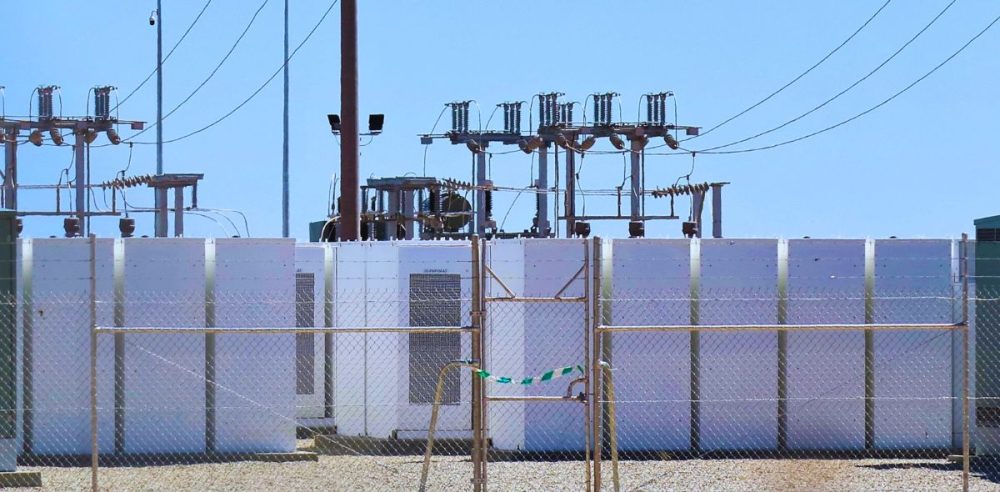Citizens of Sherman and the surrounding area gathered on March 31 to organize a charge against a battery of issues they see from an incoming lithium-ion battery energy storage system (BESS) in nearby Savoy.
The forum included local elected officials and activists from Grayson, Fannin, Franklin, Collin, and Delta Counties.
Fannin County Judge Newt Cunningham said, “A previous [county] court was sold on a [tax] abatement agreement [to build this BESS facility]; they were told how safe this was [and] we’ll get [tax] money out of this… [The developers] offered us rat cheese, and we ate the rat cheese.”
“This is a form of exploitation, and that’s not even considering the dangers,” the judge added.
While Cunningham said that previous members of the county commission knew about the project, members of the public in attendance felt they were kept in the dark.
Kaaren Tueber, the event organizer, said, “No one knew about it.”
Will Campbell, a barber with a shop less than a mile from the facility, was the first to raise public awareness of the issue three months ago when he started the Facebook group Savoy B.E.S.S. Plant.
“I don’t want this in my backyard,” he told the attendees.
The keynote speaker, Van Zandt County activist Nancy White, enumerated their fears.
White illustrated her point by pointing to the Moss Landing Power Plant fire in California. The Californian BESS caught fire in January, and the destruction has raised health concerns for humans and the environment.
Some Californians who lived near the plant reported feeling sick days after the blaze. Contemporaneously, environmental activist Erin Brockovich cited possible soil contamination in a lawsuit filed earlier this month.
Brockovich explained that lithium-ion BESS fires can be difficult to control once they reach “runaway” status, wherein their temperatures can suddenly shoot to 3000 degrees Fahrenheit if the battery cells get above 176 degrees Fahrenheit.
The Moss Landing fire was reportedly the fourth “thermal incident” at the facility involving overheating or fire since 2021, although the previous episodes had not been as catastrophic.
White focused on the BESS facilities’ proximity to natural resources and critical infrastructure. She showed a map of the development that indicated the storage center was above a national underground gas and diesel pipeline.
White also showed maps that indicated several important bodies of water, including the Lacey Fork watershed and the Carrizo-Wilcox Aquifer, were under the BESS center or nearby. She raised concerns about the possibility of widespread environmental pollution that could harm people and cattle if there were a fire.
Savoy’s Mayor, Roger Cada, pointed out that there is a school nearby.
A neighbor to the facility, who was known to the other attendees and called only by his first name, Chris, said that he moved from Richardson to Savoy many years ago to build a property where his family could spend the rest of their lives. However, he was now concerned that the looming specter of disaster at the BESS could threaten his dream to develop several homes on his property for him and his children.
Tueber, a Vietnam War-era Air Force veteran, reminded attendees that her last specialty code was for Chemical, Biological, Radiological, and Nuclear warfare as she raised concerns that a BESS disaster in Savoy could create another East Palestine, Ohio disaster situation just north of Dallas.
Tueber noted that she invited a representative from the developer, ENGIE, to speak at the forum; however, the company, which is headquartered in Houston, did not accept her invitation.
“With 24 projects now operating across the U.S., of which 6 were commissioned this year, ENGIE is among the largest operators of BESS in the country, and one of the largest independent operators of batteries supporting the ERCOT system in Texas,” ENGIE’s website says.
Other parts of its website cite the financial advantages of BESS.
“Battery Energy Storage Systems allow you to engage in energy arbitrage. With BESS, you buy your energy during off-peak hours when grid prices are lowest, store it, and use it during peak hours. When coupled with on-site wind or solar power plants, BESS enable you to maximize the value of the electricity produced from such renewable sources, contributing to a certain extent to reducing the cost of energy both at the wholesale level and hence reflecting it on electricity bills.”
Nearly every level of government has raised concerns about ENGIE’s Savoy project.
State Rep. Shelley Luther (R-Sherman) could not join due to her legislative commitments in Austin. However, she sent a statement that was read aloud to those in attendance.
It said in part, “I want you to know that I support good, conscientious businesses coming into our district provided they are willing to act as good neighbors in our community. I share the concerns of many of my constituents who feel that our communities are being overrun by businesses without any accountability or incentives for them to behave in a way that demonstrates a shared interest in all of our safety and well-being.
“Thanks to the outpouring of concern that I have heard from you, I have signed on as a co-author to a list of bills specifically related to providing accountability for BESS facilities.”
She cataloged a series of bills she supported, including HB 1343, HB 4057, HB 5569, HB 5572, and HB 1378, which she said covered everything from regulating energy facility construction to improving fire safety standards for BESS facilities.
Similarly, the Fannin County Commission voted unanimously on March 25 to form a 391 Commission with the City of Savoy over the BESS facility. These commissions allow different subdivisions of government to come together and address development issues such as transportation, utilities, and safety. The joint commission is reported to be studying the ENGIE project and working to ensure the county has the resources to manage the county’s development.


